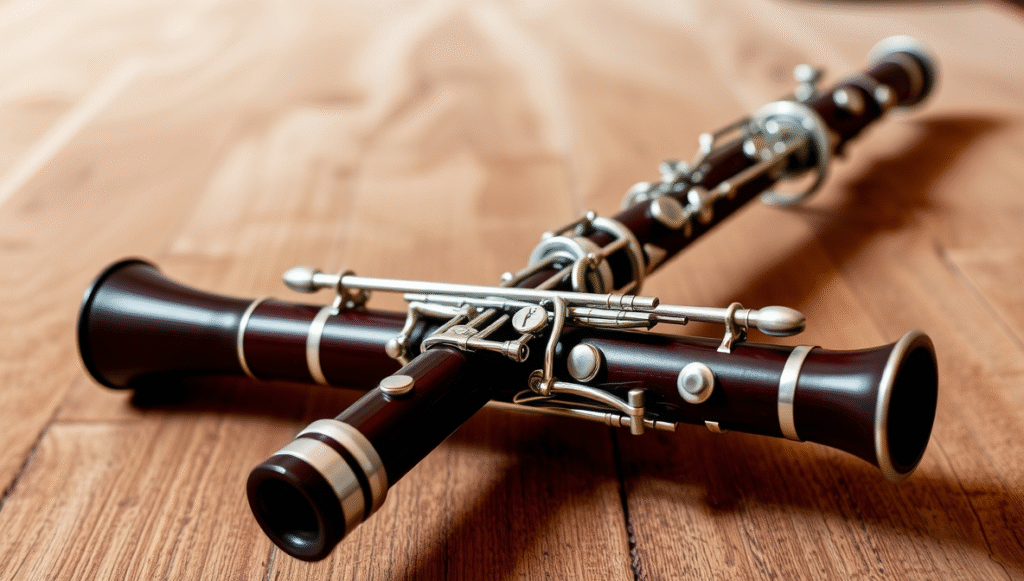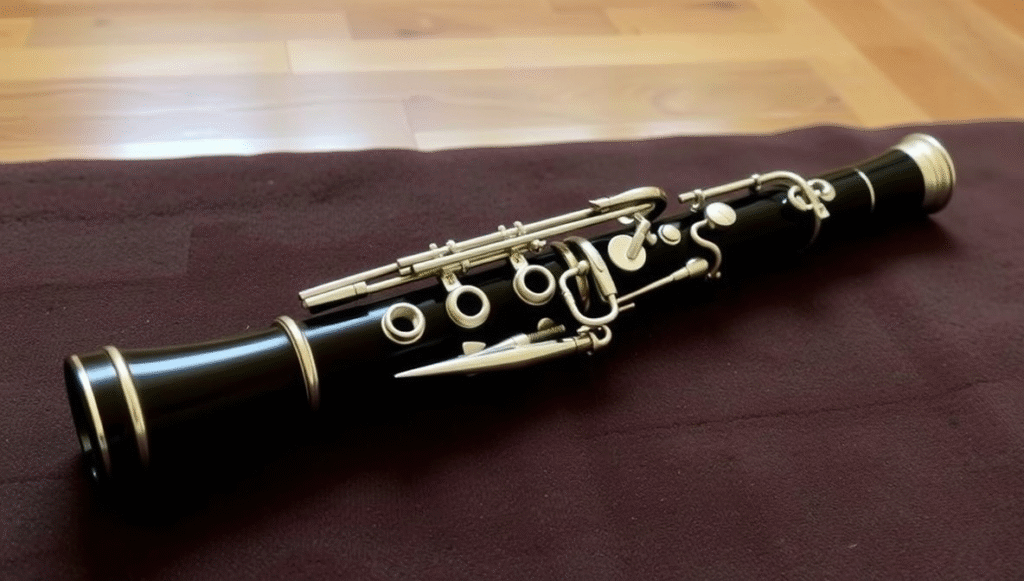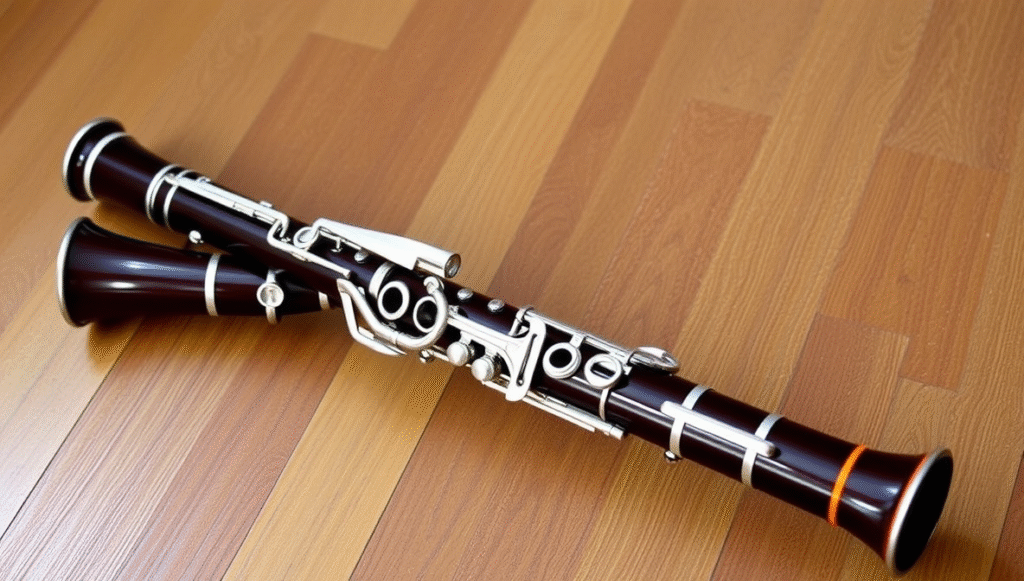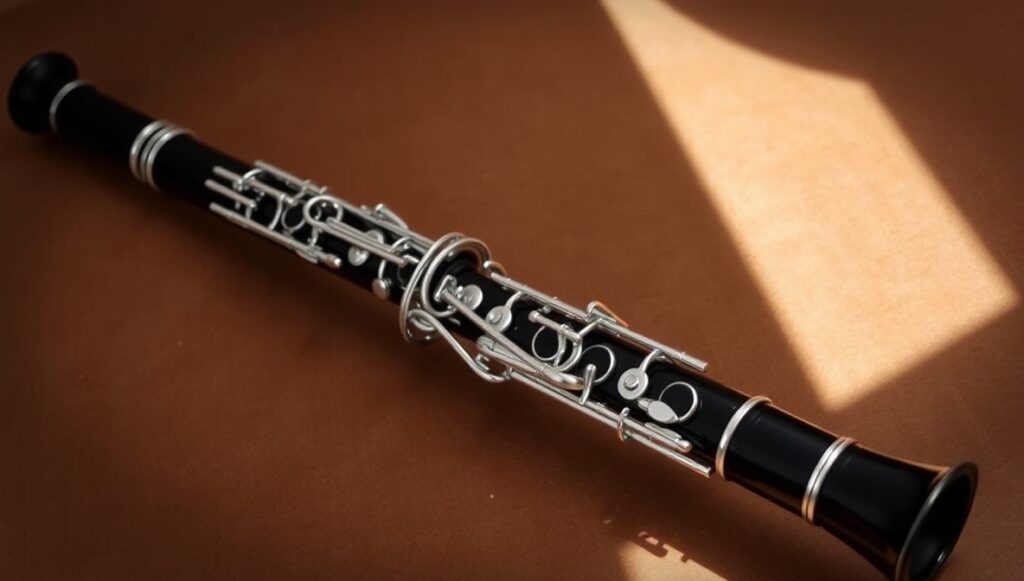The Alto Clarinet is a special woodwind instrument that sits between the regular clarinet and the bass clarinet. The alto clarinet has a rich, deep, and warm tone that makes it stand out in bands and orchestras. Many people love its sound because it feels smooth and gentle, like a soft breeze. The alto clarinet looks a bit bigger than a normal clarinet and has a curved metal bell at the bottom. This design helps it make lower notes that sound strong and clear. If you enjoy music that sounds relaxing and full, the alto clarinet is a perfect instrument to learn about or even play.
The alto clarinet is not as famous as other woodwind instruments, but it plays an important role in creating balance in musical groups. It connects the high notes of the clarinet with the low sounds of the bass clarinet. Many school bands, concert bands, and orchestras use the alto clarinet to make their music richer and more beautiful. Musicians who play the alto clarinet often say it feels like being the “middle voice” in a choir—calm, steady, and very important. If you love learning about unique instruments, the alto clarinet is a hidden gem worth exploring.

The History and Evolution of the Alto Clarinet
The alto clarinet was developed in the early 18th century when instrument makers wanted to expand the range of the clarinet family. They created different sizes of clarinets, including the alto version, to fill in the gaps between the high and low instruments. Over time, the alto clarinet became more refined with better design, keys, and materials. Early versions were made of wood, and even today, professional alto clarinets are often made from high-quality wood like grenadilla.
In the 19th century, as concert bands and orchestras grew larger, the need for instruments with different pitches became more important. The alto clarinet found its place in these groups, adding a middle sound between the soprano and bass clarinets. During this time, many composers started writing music that included the alto clarinet. However, as musical styles changed, it became less common in modern orchestras, though it still remains an important part of school and military bands around the world.
How the Alto Clarinet Sounds Compared to Other Clarinets
The alto clarinet has a sound that is deeper than the regular clarinet but not as low as the bass clarinet. Its tone is described as mellow, round, and calm. When you listen to an alto clarinet, you can feel a soft warmth in its sound. It blends beautifully with other instruments, especially in concert bands. It does not stand out as a solo instrument very often, but it adds smoothness to the overall sound of the group.
If you compare it to the B-flat clarinet, you’ll notice that the alto clarinet sounds more relaxed and less sharp. The bass clarinet, on the other hand, goes even deeper and has a more powerful, dark tone. The alto clarinet sits right in the middle, which is why many people describe it as the bridge between the two. Its range and tone make it a very useful instrument for music that needs fullness and harmony.
Key Features That Make the Alto Clarinet Special
The alto clarinet is special because of its design and sound. One of the most noticeable features is its curved neck and bell. This design helps project the lower notes more clearly. The instrument also has a large number of keys that allow the player to cover a wide range of notes. Most alto clarinets are made from wood or plastic, with metal parts to give strength and stability.
The reed and mouthpiece are slightly larger than those of a standard clarinet, which helps create its warm tone. Another feature that makes the alto clarinet unique is its ability to play both smooth melodies and supporting harmonies. It’s not an instrument that seeks attention, but when it’s missing, the music feels incomplete. It’s the kind of instrument that adds color and depth to any performance without being too loud or overpowering.
How to Play the Alto Clarinet for Beginners
Learning to play the alto clarinet can be a fun experience, especially for those who already know how to play the B-flat clarinet. Beginners start by learning how to hold the instrument properly, place the mouthpiece correctly, and control their breathing. Since the alto clarinet is larger, it takes a bit more air to produce sound. But with practice, anyone can learn to play it comfortably.
It’s also important to learn finger placement, as the keys are slightly wider apart compared to smaller clarinets. Regular practice helps players develop stronger breath control and better tone quality. Beginners can start by playing simple scales and easy songs to get familiar with the sound. Over time, they can move on to band pieces or solo music that highlights the beauty of the alto clarinet. Patience, practice, and good posture are key to becoming a skilled player.

Common Uses of the Alto Clarinet in Bands and Orchestras
The alto clarinet is often used in concert bands, wind ensembles, and sometimes in orchestras. Its main job is to fill in the middle voice between higher and lower instruments. In band music, it supports melodies and creates smooth transitions between different sections. This role might sound simple, but it’s very important for the balance of the entire performance.
In some classical pieces, the alto clarinet is given solo parts that show off its beautiful tone. However, it is more common in large bands where its deep sound helps blend everything together. School bands also use the alto clarinet because it teaches students about harmony and tone control. While it is not as popular as the regular clarinet, it still plays a big part in the overall sound of a band.
Famous Musicians Who Play the Alto Clarinet
Though the alto clarinet is less common than other instruments, some talented musicians have made it shine. Many professional clarinet players also learn the alto clarinet because it helps them play different parts in ensembles. Some jazz musicians have experimented with the alto clarinet, using it to create new and interesting sounds. In classical and concert bands, players appreciate it for its balance and tone.
Composers like Gustav Holst, Percy Grainger, and Ralph Vaughan Williams have included the alto clarinet in their famous band compositions. These musicians recognized how well the instrument blends with others and how it adds depth to their music. Even though there are not many famous solo players of the alto clarinet, its beauty lies in teamwork—it’s an instrument that helps others sound better.
How to Care for and Maintain Your Alto Clarinet
Taking care of your alto clarinet is important if you want it to last long and sound great. After each practice, it’s a good idea to clean the inside with a soft cleaning cloth or swab. This removes moisture that builds up from playing. The reed should be dried and stored safely after use. It’s also important to keep the instrument in its case when not playing to protect it from dust and damage.
If the alto clarinet is made of wood, you should oil the bore occasionally to keep it from drying out. The keys and pads should be checked regularly to make sure they are sealing properly. You can take the instrument to a repair shop for maintenance if something feels wrong. Proper care not only keeps your alto clarinet sounding good but also helps you enjoy playing it for many years.
Alto Clarinet vs Bass Clarinet: What’s the Difference
The alto clarinet and bass clarinet are often compared because they both produce low notes, but they have clear differences. The alto clarinet is pitched in E-flat, while the bass clarinet is usually in B-flat. This means the bass clarinet sounds deeper. The alto clarinet is smaller and lighter, making it easier to handle. Its tone is warm and rich, while the bass clarinet has a darker, heavier sound.
In bands, the bass clarinet often plays the foundation of the music, while the alto clarinet supports the middle range. Both are important, but they serve different musical roles. If you prefer a smooth and softer sound, the alto clarinet might be your favorite. But if you like powerful and deep tones, the bass clarinet could be a better fit. Many clarinet players learn both to have more options in their musical journey.
Why You Should Learn to Play the Alto Clarinet
Learning to play the alto clarinet can open new musical opportunities. It helps players develop better tone control and breath strength. The instrument teaches patience and focus, as it requires steady airflow and careful finger movement. Students who play the alto clarinet often become more confident musicians because they learn to blend and support others in a band.
The alto clarinet is also a great choice for players who enjoy warm, low sounds. It’s not as competitive as other instruments, so you might get more chances to play in school or community bands. Plus, learning the alto clarinet can make it easier to pick up other clarinets later on. It’s a unique instrument that offers both challenge and joy to anyone who loves music.

Conclusion
The alto clarinet is a beautiful and underrated instrument that deserves more attention. With its deep, mellow sound, it brings harmony and balance to every band or ensemble. Whether you are a beginner or an experienced musician, the alto clarinet offers a wonderful experience full of learning and creativity. Taking care of it and practicing regularly will help you master its rich tone and smooth style. It may not be the loudest instrument, but it plays a big part in making music complete.
FAQs
What key is the alto clarinet in?
The alto clarinet is usually pitched in E-flat, which means it sounds lower than the standard B-flat clarinet.
Is the alto clarinet hard to play?
It takes some practice to get used to its size and air control, but it’s not too hard for someone who already knows how to play the clarinet.
What is the range of the alto clarinet?
The alto clarinet has a range of about three and a half octaves, from low E-flat to high G.



